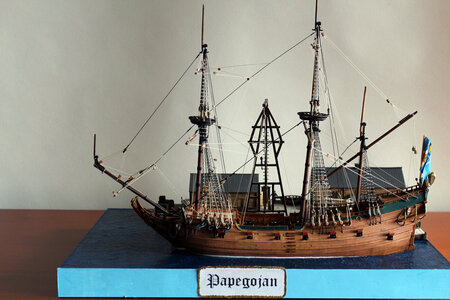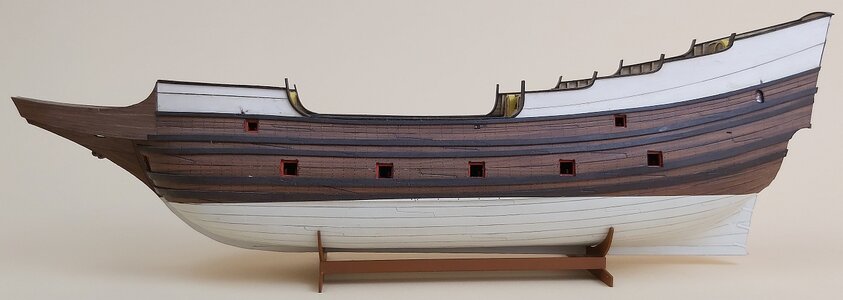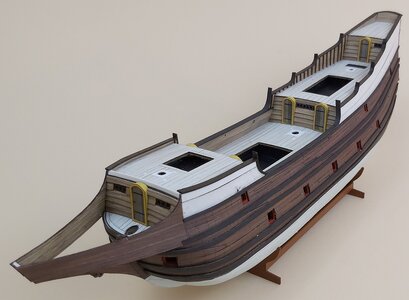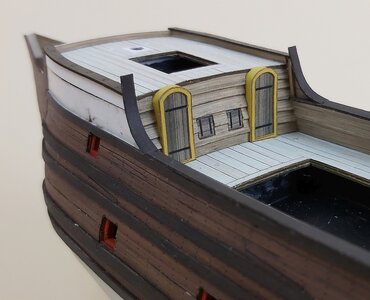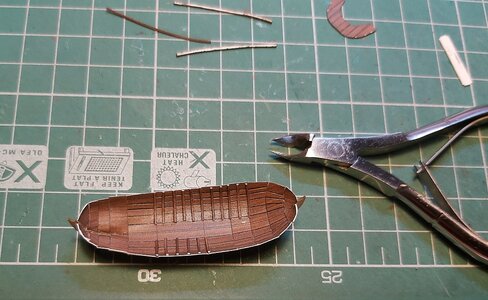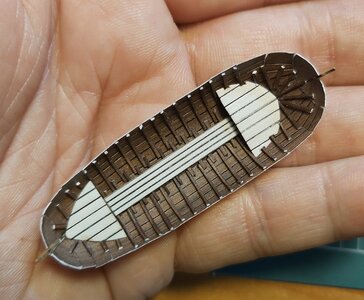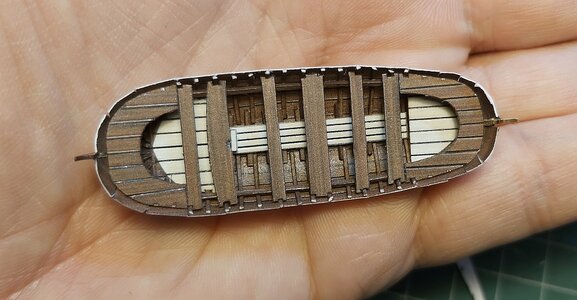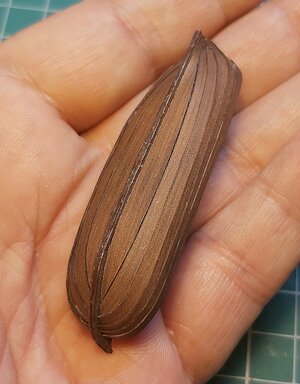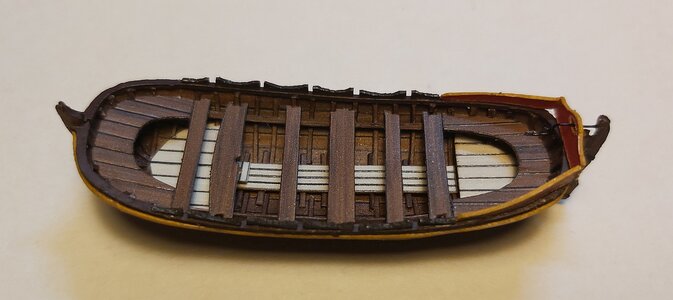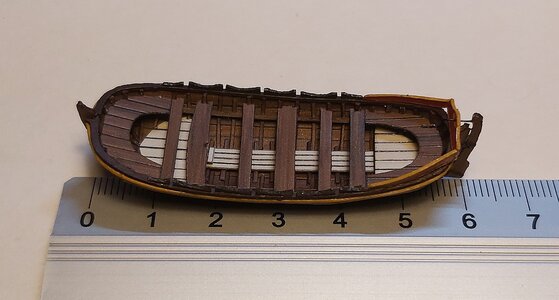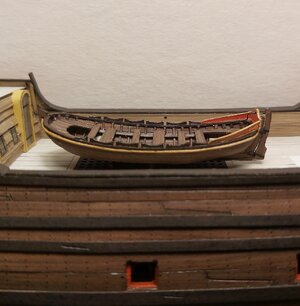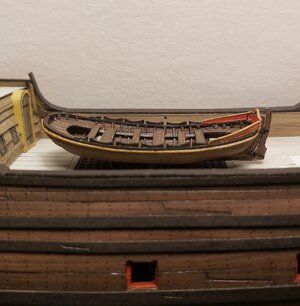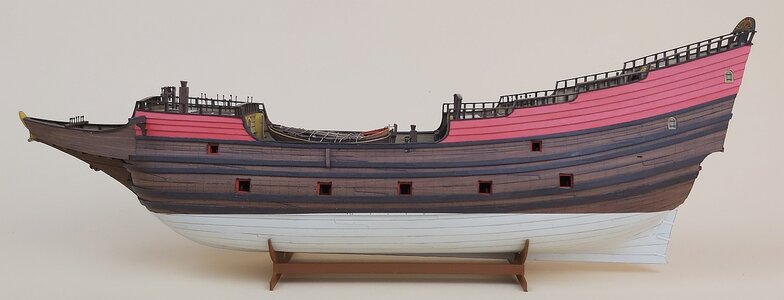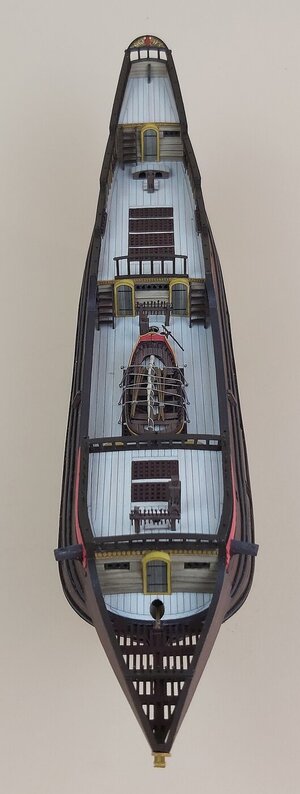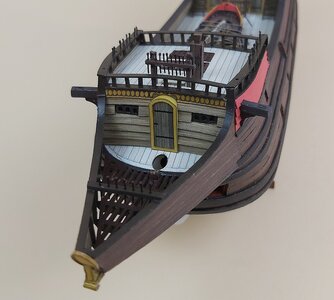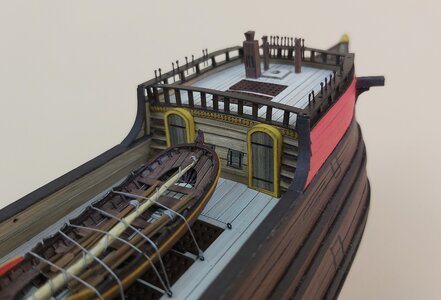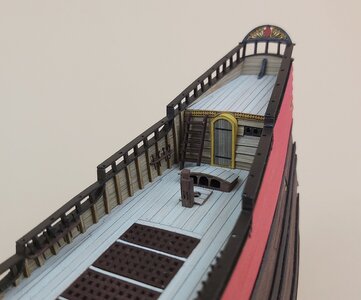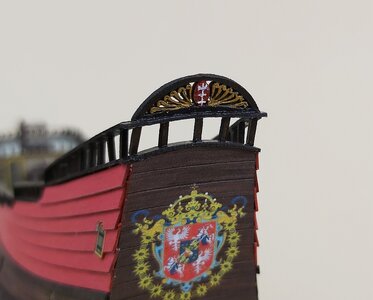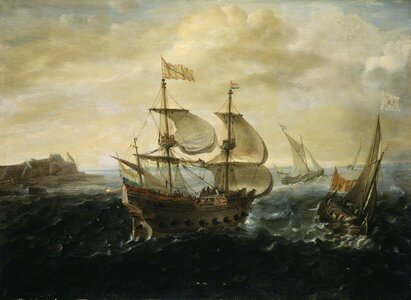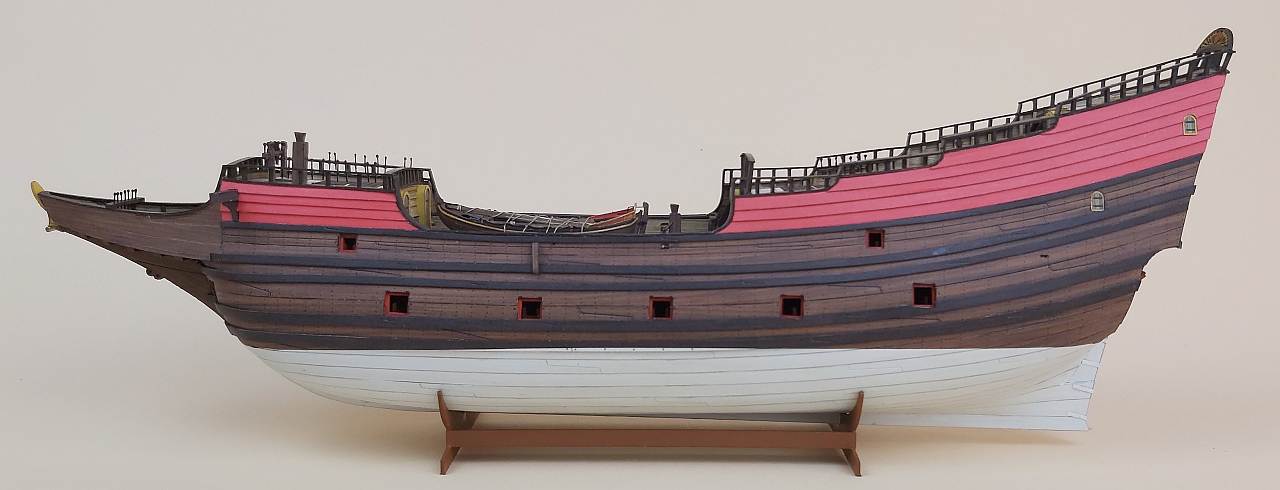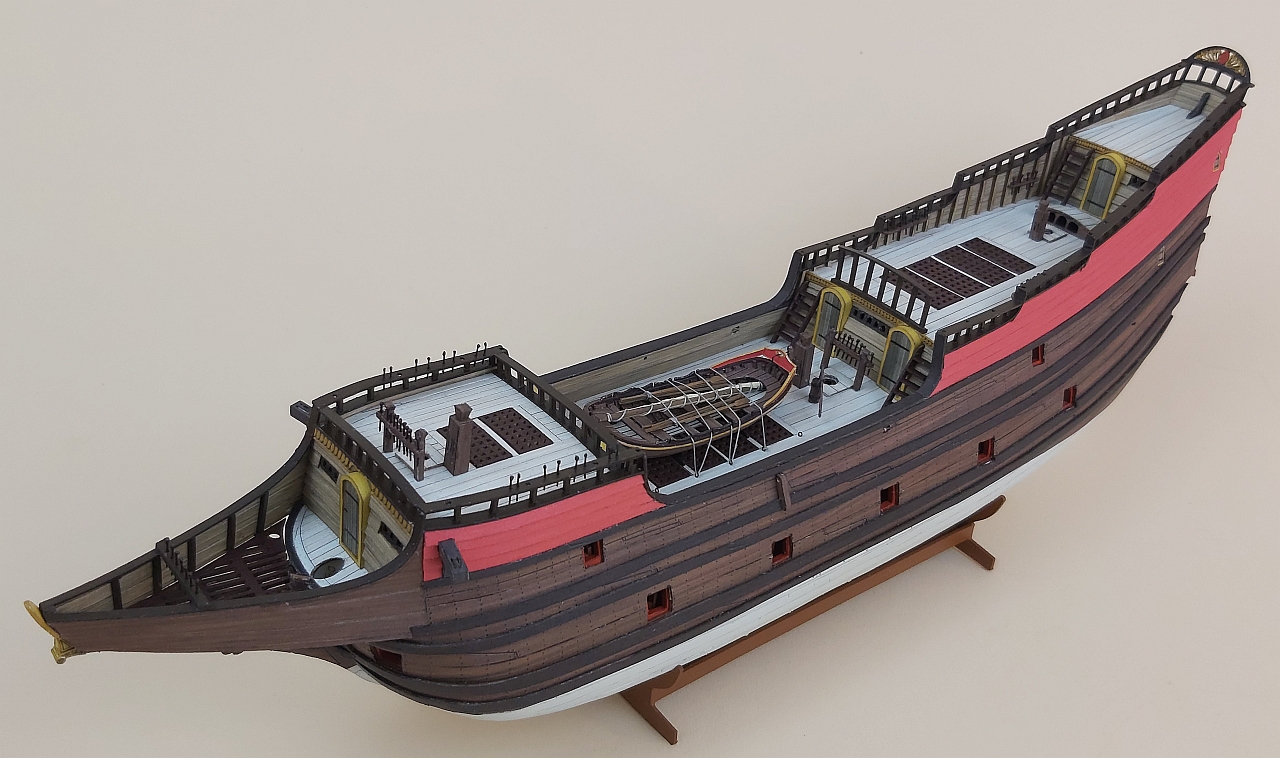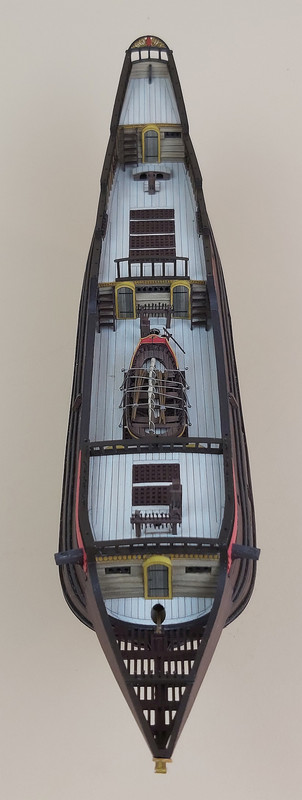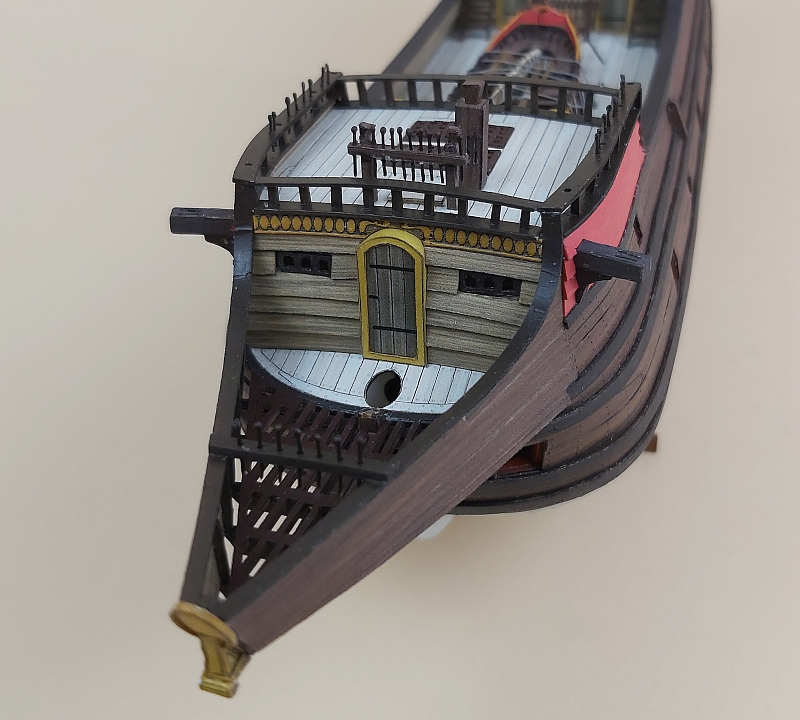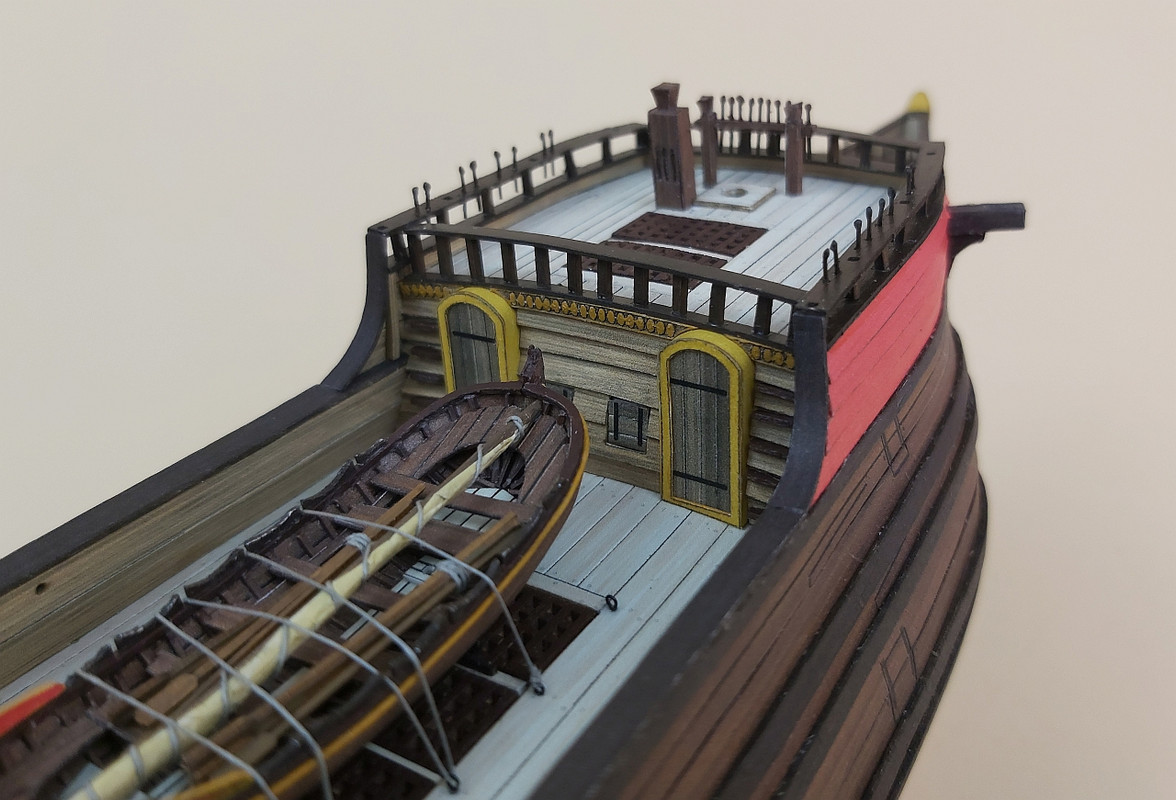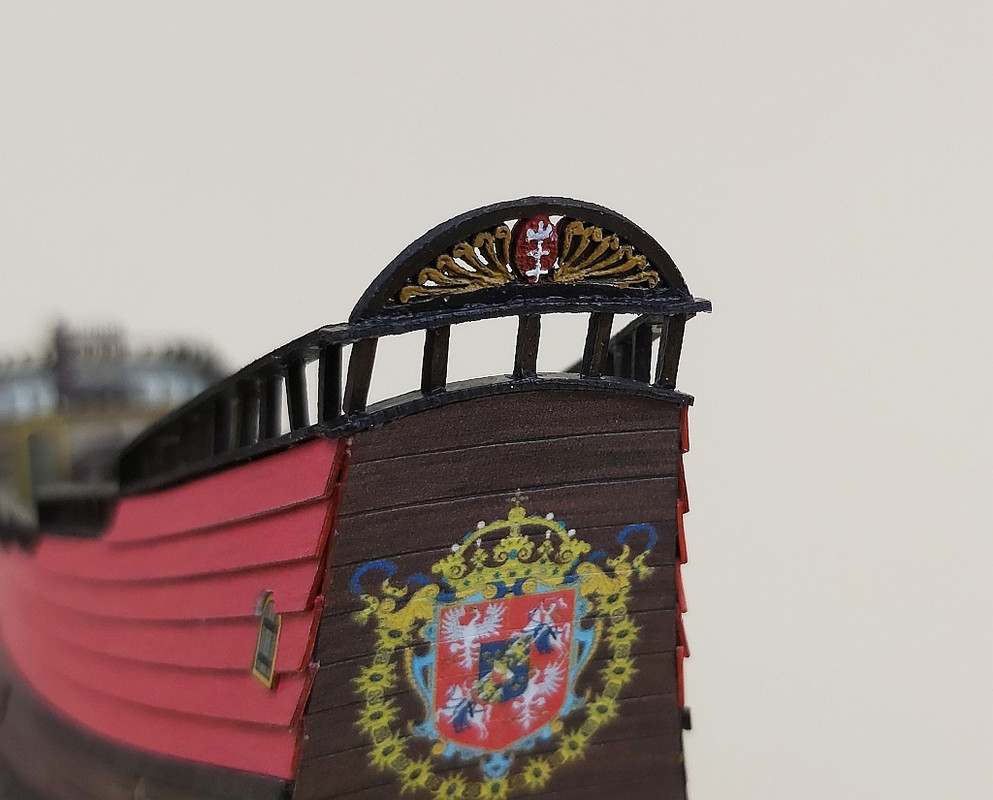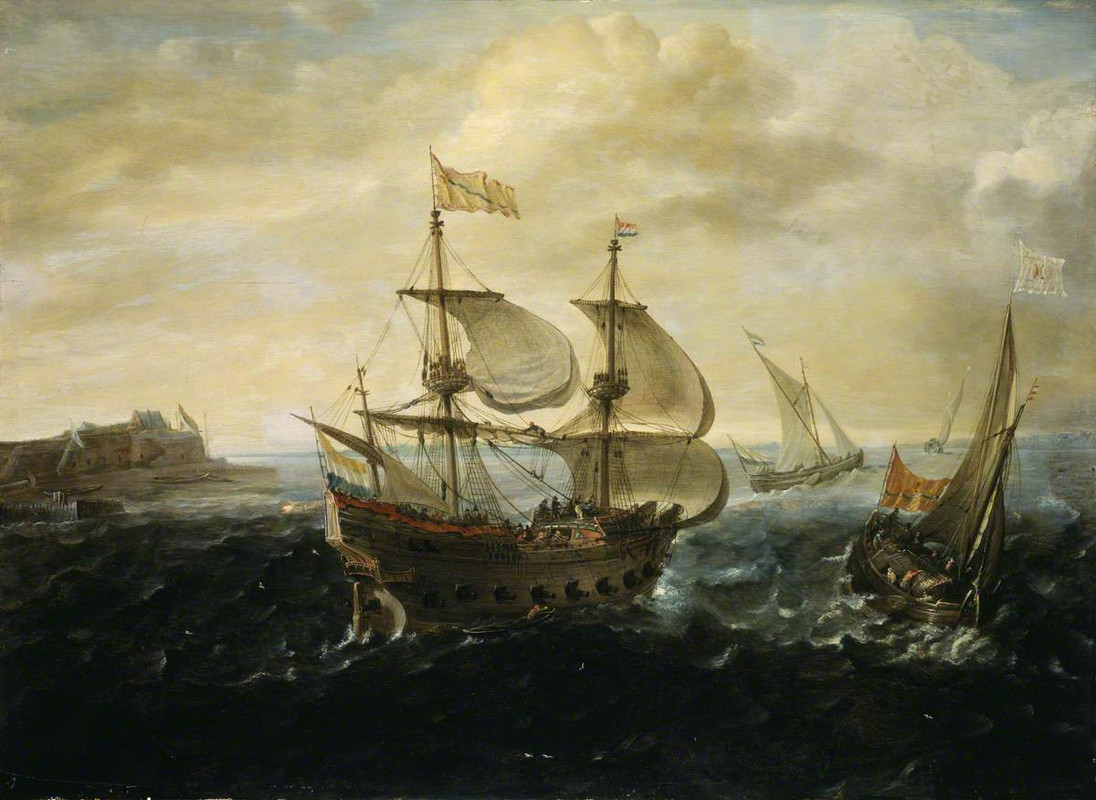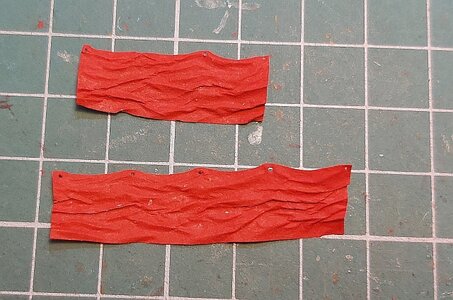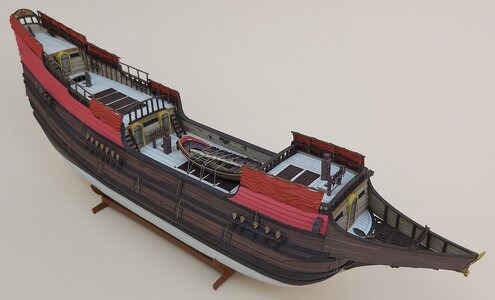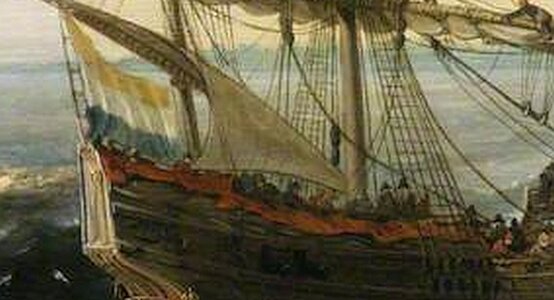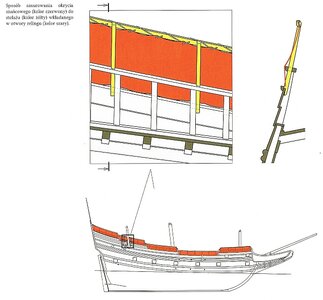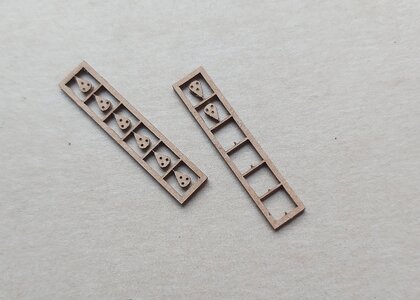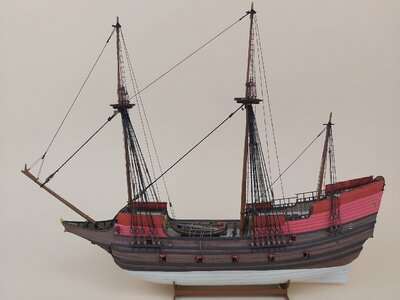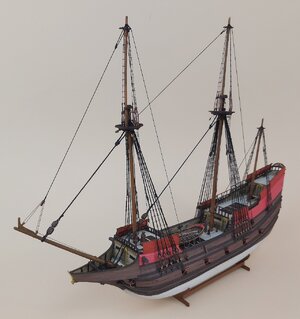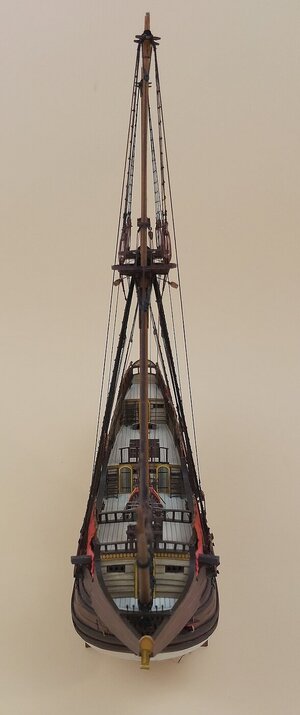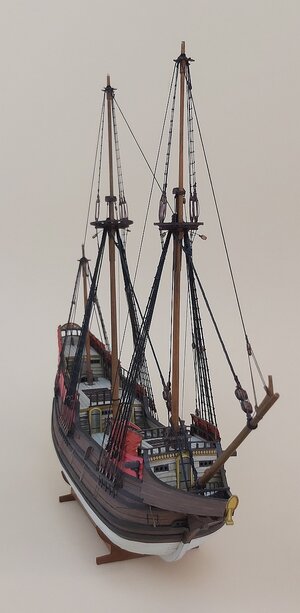Welcome everyone,
encouraged by a group of friends, I made a bold decision to develop a model of the "Meermann" ship, which took part in the Battle of Oliwa in 1627. The battle was not big when we compare it to great clashes of great maritime powers, but for Poland at that time it had a huge political and propaganda dimension. Because here "... the traders from Danzig defeated one of the strongest fleets - Sweden ..." as the angry king of Sweden reportedly said. The dynastic war with Sweden, in which the Republic of Poland got involved, led to the Swedish capture of part of the Polish coast and the sea blockade of Gdańsk. Partially built in Gdansk, partially bought (mainly from the Netherlands), the Polish fleet, emerging from the morning mists, attacked the "sleeping" Swedish ships standing in the roadstead of Gdansk. The Poles captured the Swedish "Tigern" and caused an explosion on "Solen" which sank. The Swedes withdrew, that's the whole battle.
Battle of Oliwa
Unfortunately, there are not many sources regarding the construction of these ships, so we can only use "standard" solutions from that period. Since my English is not so perfect that I could, like Ab Hoving, write passionately about dilemmas during the reconstruction, I will stick to some of the most important facts and a few "blank spots" to which Polish historians and researchers have not found an answer so far.
The dimensions of the ship are known with some assumption that all mistakes were detected in the main source, ie "Wismar inventory". There is no original document, only the original copy, in which the copyist's mistakes were found. Also the weapons and equipment are known from the above list.
The Scot James Murray was responsible for the creation of the Polish fleet, which for many historians is tantamount to the statement that they were English-style ships. But the empty royal treasury (which probably lasts to this day ) allows you to suspect that maybe it was built in the Dutch style, which was much cheaper and faster than the English method. Besides, some of the ships that were part of the Polish young fleet were bought from the Dutch. There are many such unresolved dilemmas for each ship.
) allows you to suspect that maybe it was built in the Dutch style, which was much cheaper and faster than the English method. Besides, some of the ships that were part of the Polish young fleet were bought from the Dutch. There are many such unresolved dilemmas for each ship.
I am familiar with four images depicting this event, but they differ drastically and, as recently noticed, are partially copies of other earlier images. The mere fact of "piracy" in painting is not surprising, but it reduces the credibility of such works. In short: in the most popular of these paintings by P. Janssen you can see a copy of the ships from the Dutch painting of the Battle of Bantam (1603), and the second important painting, A. Boy's watercolor, is a compositional copy of the painting of the first one, i.e. P. Janssen
Searching for an answer is hampered by the multitude of myths that cling to the Battle of Oliwa. Around 1950, the plans of "Meermann" were created, which in fact are a modification of the plans of the "Rotter Lowe", with anachronistic geometric patterns in white and red on the sides. It seems to me that only Hansa ships had decorations of this type at that time. By the way, the red and white colors became the national colors of Poland only in 1792. Such a form of "Meerman" caught on in the mentality of even researchers who reproduced these and other errors. In the mindset of many Poles, this battle took the form of not a historical event, but a legend.
There are still many details that I could complain about, so maybe enough
When building, I used typical lines of Dutch ships from that period, because I assumed that there were masters from the Netherlands, not from England, in the Gdańsk shipyard. And probably right, because I had to introduce few changes to make the dimensions taken from the "Wismar inventory" match the ones I have. This applies not only to the distance between decks, width and length, but also to the draft, which turned out to be almost identical.
So the hull was built.
1 mm cardboard frames. Simplified gun carriages inserted on one side.
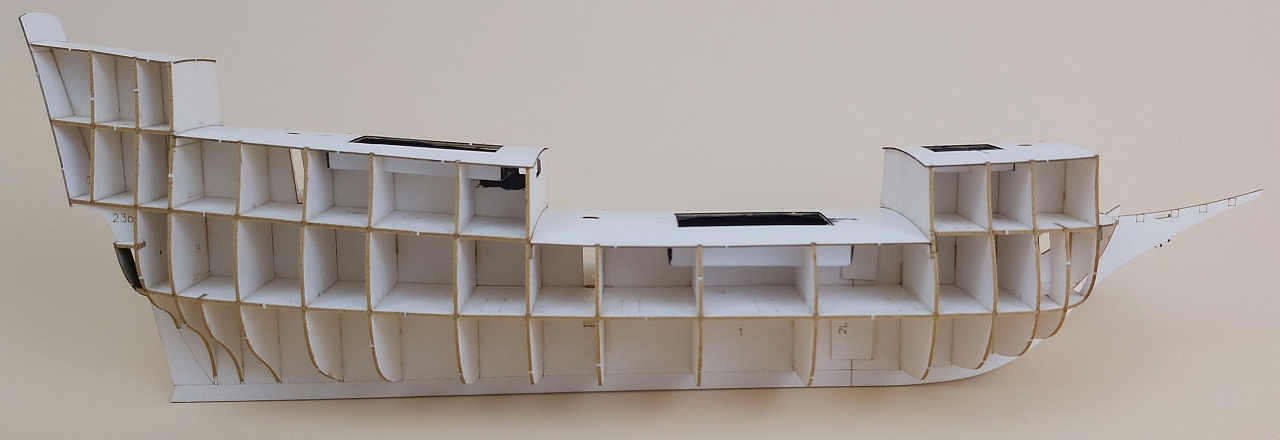
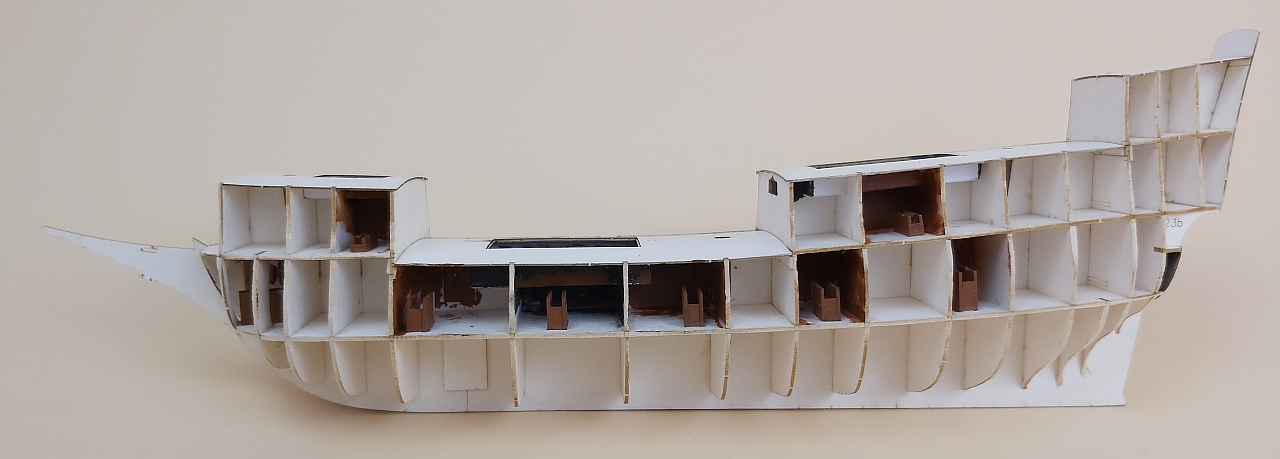
The first cover stiffening the structure:
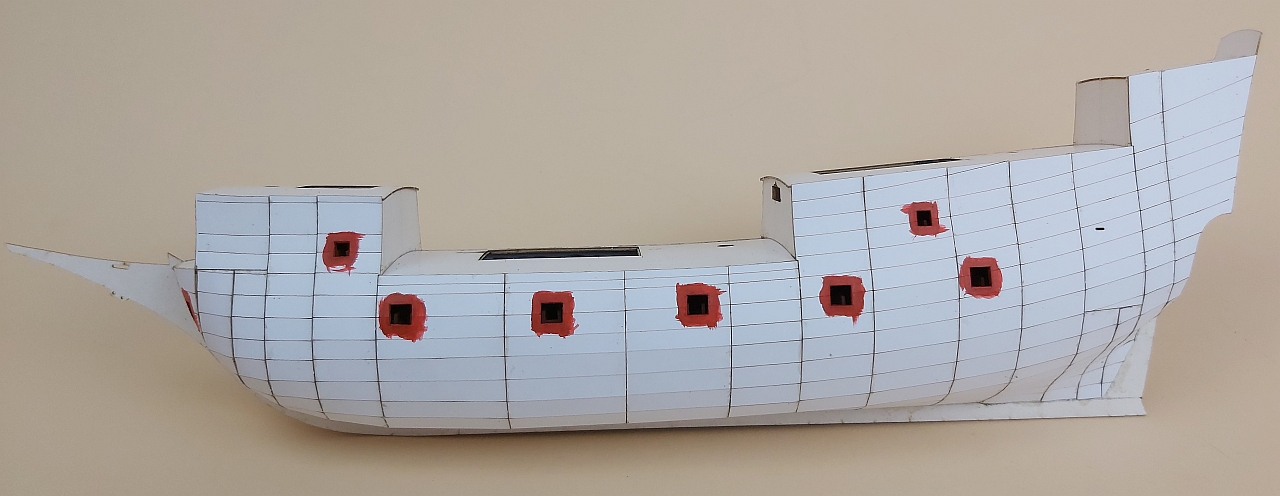
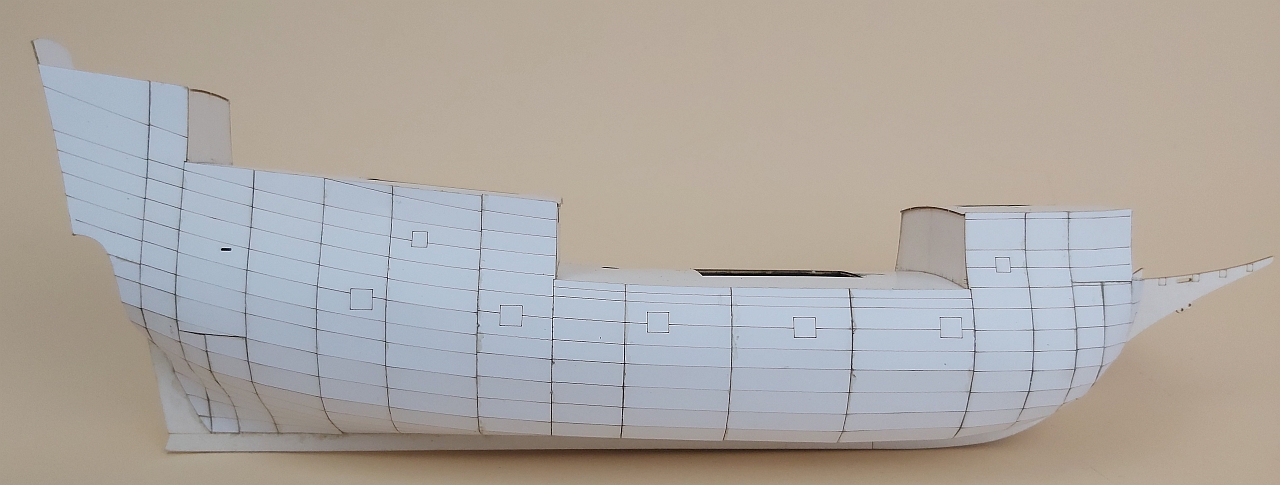
And the second horizontal cover:
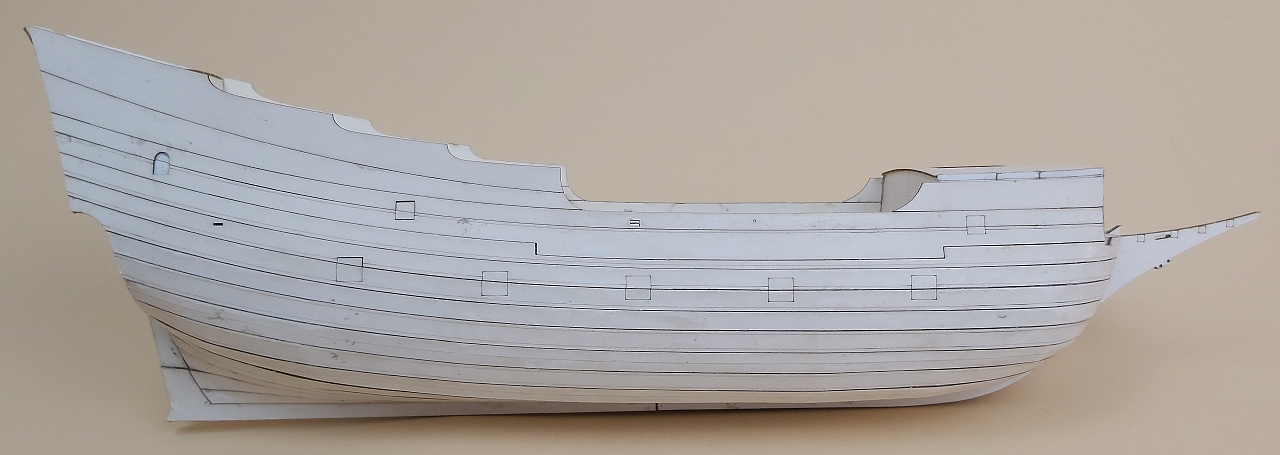
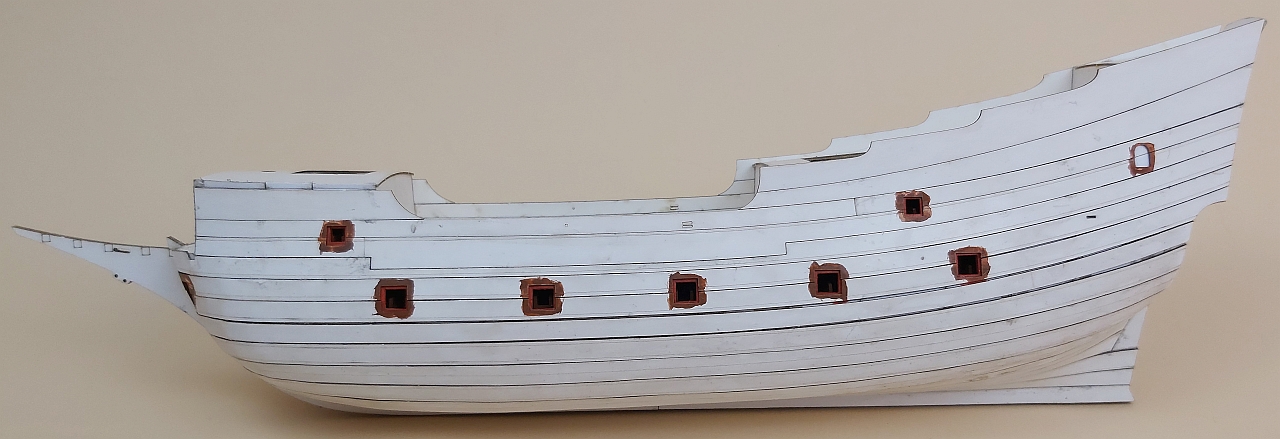
I put planks on the hull prepared in this way:

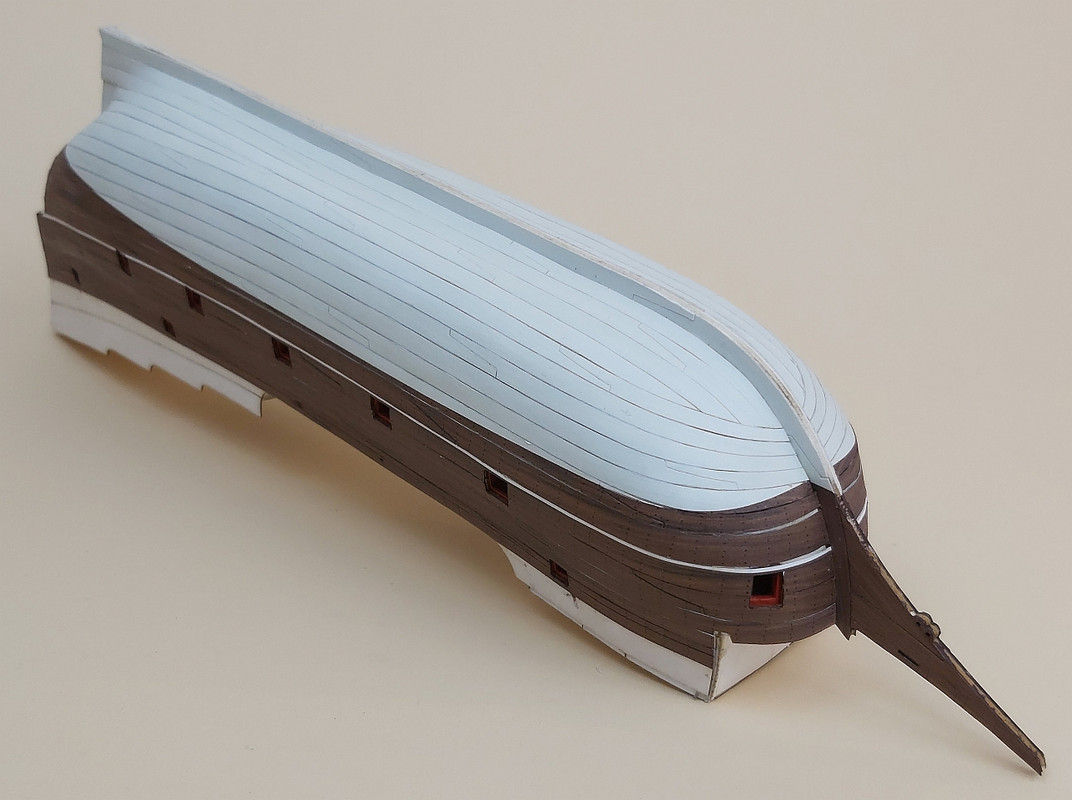


Best regards
Tomek
encouraged by a group of friends, I made a bold decision to develop a model of the "Meermann" ship, which took part in the Battle of Oliwa in 1627. The battle was not big when we compare it to great clashes of great maritime powers, but for Poland at that time it had a huge political and propaganda dimension. Because here "... the traders from Danzig defeated one of the strongest fleets - Sweden ..." as the angry king of Sweden reportedly said. The dynastic war with Sweden, in which the Republic of Poland got involved, led to the Swedish capture of part of the Polish coast and the sea blockade of Gdańsk. Partially built in Gdansk, partially bought (mainly from the Netherlands), the Polish fleet, emerging from the morning mists, attacked the "sleeping" Swedish ships standing in the roadstead of Gdansk. The Poles captured the Swedish "Tigern" and caused an explosion on "Solen" which sank. The Swedes withdrew, that's the whole battle.
Battle of Oliwa
Unfortunately, there are not many sources regarding the construction of these ships, so we can only use "standard" solutions from that period. Since my English is not so perfect that I could, like Ab Hoving, write passionately about dilemmas during the reconstruction, I will stick to some of the most important facts and a few "blank spots" to which Polish historians and researchers have not found an answer so far.
The dimensions of the ship are known with some assumption that all mistakes were detected in the main source, ie "Wismar inventory". There is no original document, only the original copy, in which the copyist's mistakes were found. Also the weapons and equipment are known from the above list.
The Scot James Murray was responsible for the creation of the Polish fleet, which for many historians is tantamount to the statement that they were English-style ships. But the empty royal treasury (which probably lasts to this day
I am familiar with four images depicting this event, but they differ drastically and, as recently noticed, are partially copies of other earlier images. The mere fact of "piracy" in painting is not surprising, but it reduces the credibility of such works. In short: in the most popular of these paintings by P. Janssen you can see a copy of the ships from the Dutch painting of the Battle of Bantam (1603), and the second important painting, A. Boy's watercolor, is a compositional copy of the painting of the first one, i.e. P. Janssen
Searching for an answer is hampered by the multitude of myths that cling to the Battle of Oliwa. Around 1950, the plans of "Meermann" were created, which in fact are a modification of the plans of the "Rotter Lowe", with anachronistic geometric patterns in white and red on the sides. It seems to me that only Hansa ships had decorations of this type at that time. By the way, the red and white colors became the national colors of Poland only in 1792. Such a form of "Meerman" caught on in the mentality of even researchers who reproduced these and other errors. In the mindset of many Poles, this battle took the form of not a historical event, but a legend.
There are still many details that I could complain about, so maybe enough
When building, I used typical lines of Dutch ships from that period, because I assumed that there were masters from the Netherlands, not from England, in the Gdańsk shipyard. And probably right, because I had to introduce few changes to make the dimensions taken from the "Wismar inventory" match the ones I have. This applies not only to the distance between decks, width and length, but also to the draft, which turned out to be almost identical.
So the hull was built.
1 mm cardboard frames. Simplified gun carriages inserted on one side.


The first cover stiffening the structure:


And the second horizontal cover:


I put planks on the hull prepared in this way:




Best regards
Tomek





